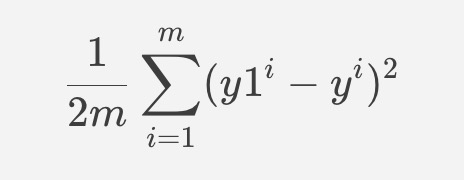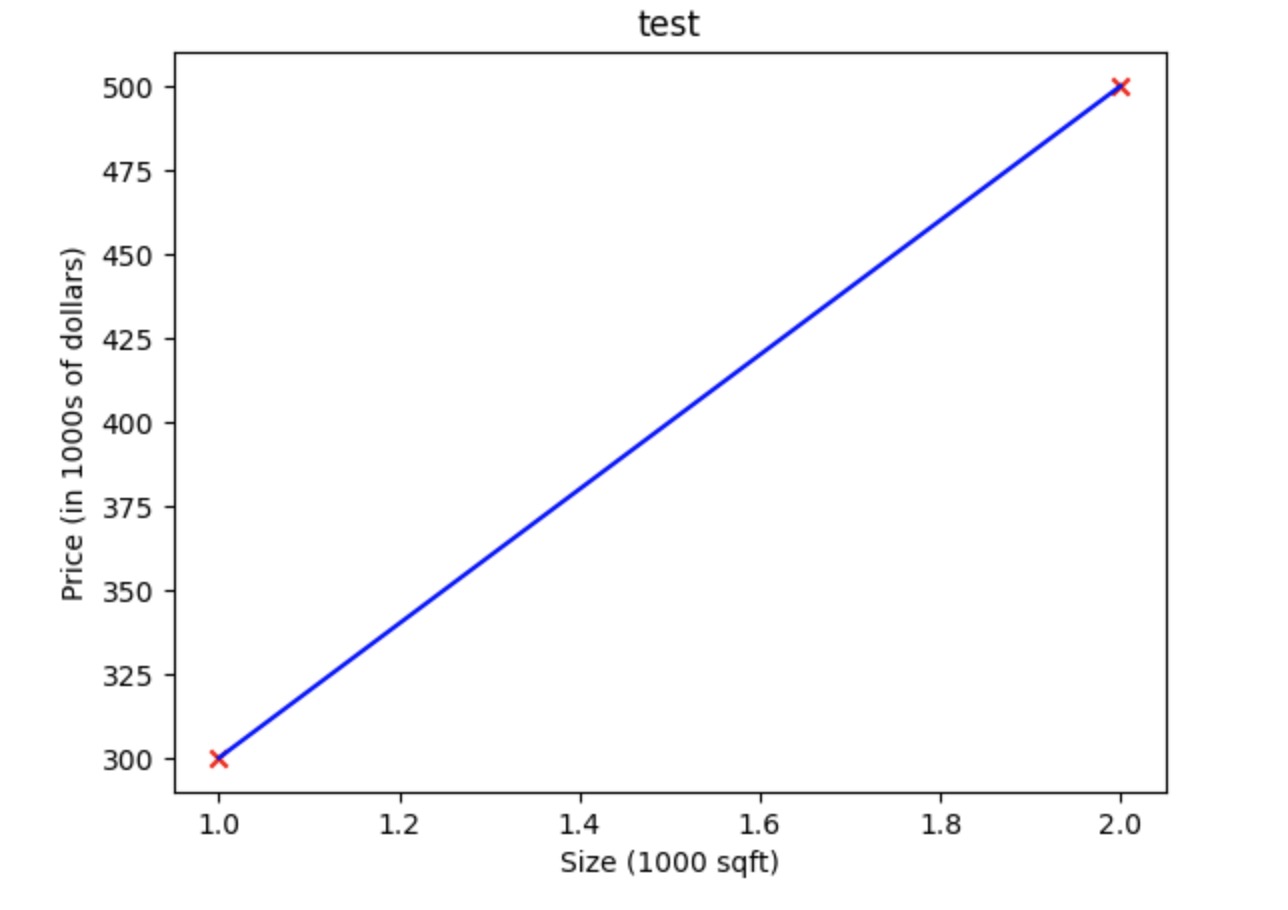Linear Regression Model
training set -> learning algorithm -> function (model to predition y)
- Linear regression with
one variable.
Cost Function
-
Cost function: Squared error cost function. (The most commonly used one for linear regression)
This is the formula of markdown, but on the website it does not work, so I will post an image to show the formula.
$$
\frac{1}{2m} \sum_{i=}1^m(y1^i - y^i)^2
$$

-
notation:
- m = number of training examples
- By convention, the cost function that machine learning people use actually divides by 2 times m, which just meant to make some of our later calculations look neater.
-
The goal of linear regression is to find the parameters w or w and b that result the smallest possible value for the cost function J. (J is a cost function)
Example
Linear Regression Example
import numpy as np
import matplotlib.pyplot as plt
x_train = np.array([1.0, 2.0])
y_train = np.array([300.0, 500.0])
w = 200
b = 100
def compute_model_output (x, w, b):
num = len(x)
f_wb = np.zeros(num)
for i in range(num):
f_wb[i] = w * x[i] + b
return f_wb
tmp_f_wb = compute_model_output(x_train, w, b)
plt.plot(x_train, tmp_f_wb, c='b',label='Our Prediction')
plt.scatter(x_train, y_train, marker = 'x', c = 'r')
plt.title('test')
plt.ylabel('Price (in 1000s of dollars)')
plt.xlabel('Size (1000 sqft)')
plt.show()

Cost Function Example
import numpy as np
import matplotlib as plt
x_train = np.array([1.0, 2.0])
y_train = np.array([300.0, 500.0])
def compute_cost(x, y, w, b):
num = len(x)
cost_num = 0
for i in range(num):
f_wb = w * x[i] + b
cost = (f_wb - y[i]) ** 2
cost_num += cost
total_cost = (1 / 2 * num) * cost_num
return total_cost



